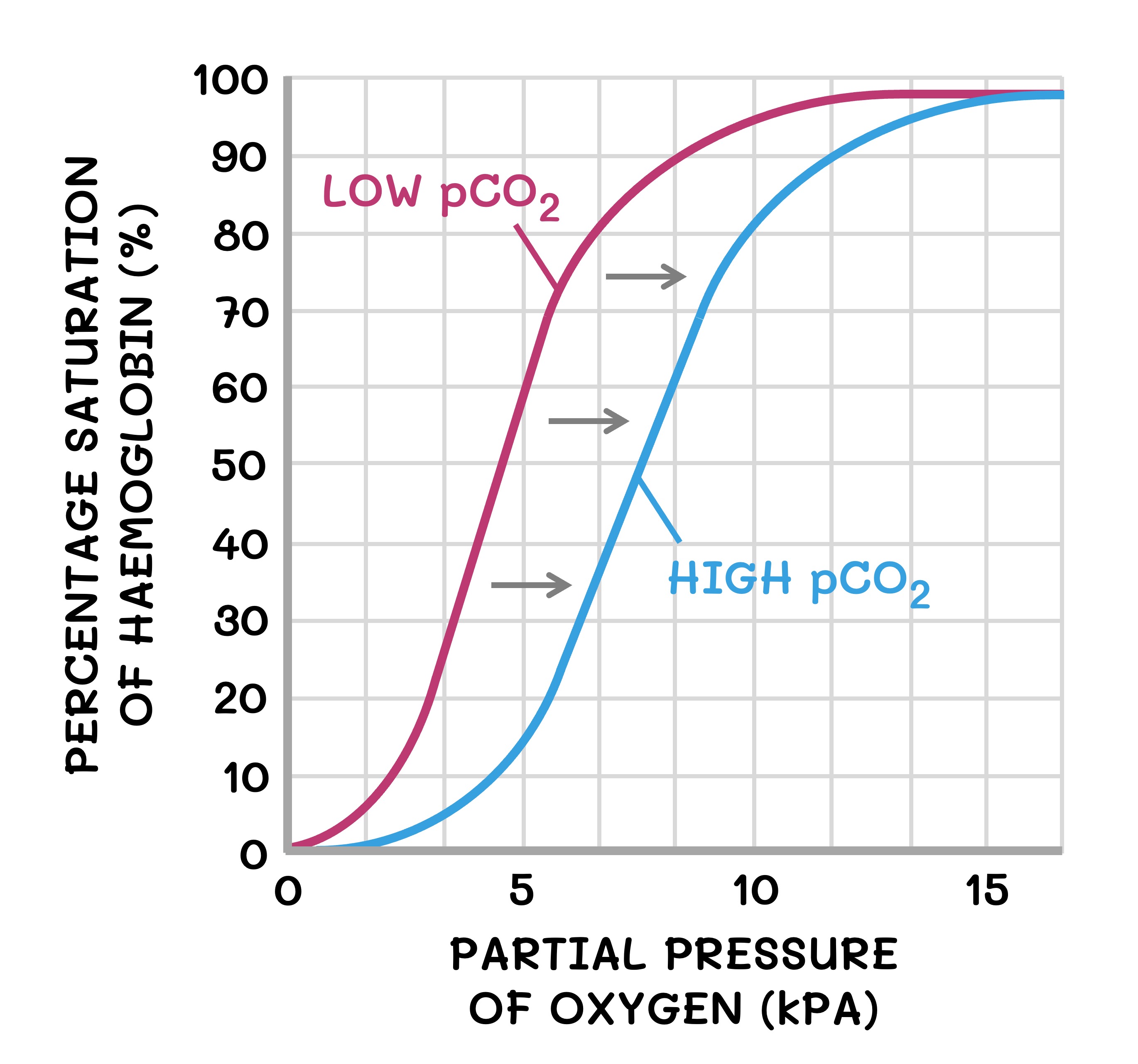

Bohr Effect
The oxygen dissociation curve demonstrates the saturation of oxyhaemoglobin based on the partial pressure of oxygen
-
Carbon dioxide changes the affinity of haemoglobin for oxygen and changes the pattern of oxygen saturation (this is called the Bohr effect)
Carbon dioxide causes haemoglobin to dissociate from oxygen more readily, shifting the dissociation curve to the right (Bohr shift)
-
This is a helpful change in respiring tissue where carbon dioxide levels are higher, as it means more oxygen is made available for aerobic respiration
One way carbon dioxide causes a Bohr shift is by binding directly to haemoglobin via an allosteric site (~10% of CO2 is transported this way)
-
The binding of carbon dioxide causes a conformation change in haemoglobin that reduces its affinity for oxygen
Another way carbon dioxide causes a Bohr shift is by changing the hydrogen ion concentration within the red blood cell (~80% of CO2 involves this process)
-
When carbon dioxide enters a red blood cell, it may combine with water to form carbonic acid (H2CO3)
-
The carbonic acid then dissociates into hydrogen ions (H+) and bicarbonate (HCO3–)
-
The bicarbonate is pumped out of the cell and transported in the bloodstream as sodium bicarbonate (NaHCO3)
-
The hydrogen ions bind to haemoglobin and reduce its affinity for oxygen (resulting in a Bohr shift)
-
When the blood cell reaches the lungs, the sodium bicarbonate re-enters the cell and is converted back into carbon dioxide for exhalation
-
This requires the release of the hydrogen ion from haemoglobin, increasing its affinity for oxygen within the lungs
-
The Bohr Shift





